Advertisement
Poland has a fascinating history and culture. It began in about the 10th century, and became a great nation. Warsaw is the third city to be the capital of Poland, after Poznan and Krakow, because a king moved there temporarily after a fire in his palace in Krakow and then realised it was better to rule the country from the middle. Poland had a monarchy from the beginning, but after one king died without heirs, the nobles decided to elect a king from among the nobility and aristocracy. They also had a parliament of sorts, in which a single vote could veto a bill, but apparently it took a few hundred years for anyone to actually use this-- they just tried to work things out. Poland also used to be joined with Lithuania, from the 14th century, when a female king (more on this in my Krakow post) married a Lithanian prince and joined the kingdoms.
A really important part of Polish history is the partitions. Prussia, Russia and Austria basically decided to just kind of cut off chunks of a whole other country for themselves! This happened three times. First, they scooped out territory near them in 1772. Then they did it again in 1793 and 1795, until Poland was not on the map anymore. Russia was pretty bad to be under, and Germany was middle, and Austria was best, as it was already multi-ethnic and didn't make them use German to the exclusion of Polish. That said, it generally bites to have your country sliced up without even consulting you. There was some resistance, but three bullies at once isn't really a fair fight.
The next big thing is independence in 1918-- November 11th is their independence day, for when the Treaty of Versailles was signed ending WWI, Poland was re-created along Wilson's principles of nation-states for ethnic groups. Poland established a democracy, although really, it soon went over to a military leader, Jozef Piłsudski. He was a hero for defeating the Soviets in their attempt to get the German proletariat going by marching across Poland (big countries tend to think they can just use anybody as their road- cf. Germany trying to march through Belgium to France in WWI, if I recall correctly). Piłsudski is a national hero, and his history was surpressed under communism (the Soviets weren't too fond of the national hero being someone who'd kicked them (including Stalin, who commanded a unit) right back into Russia). I have to say, I'm a bit less enthusiastic about Piłsudski. I respect that he really cared about his country and wanted it to be run well, but you don't make a democracy work by stepping in every time it isn't run right. I'm not going to say that aloud here, though. 😉
Once again, in World War II, Poland was basically obliterated from the map, even by the same parties, although under different names (the Anschluss had joined Austria and Germany, Germany had only come into being in 1870 or 1871, and Russia, of course, was the Soviet Union). In the secret protocols of the Ribbentrop-Molotov (non-agression) Pact, they divided up Poland, Lithuania, Latvia, and Estonia between them. So in September of 1939, they both just... moved in, splitting the country betweent hem. The Polish Government in Exile had broken off relations with the Soviets in 1943 when the Nazis announced they had found a mass grave in the Katyn Forest. The Soviets blamed the Nazis until admitting the truth in 1990, finally. The Home Army was the underground military of the Gov in Exile, and led the Warsaw Uprising in 1944, although ultimately it was unsuccessful.
The war really really hurt Poland, both in terms of so many lives lost and damage to land/buildings/etc. Some reconstruction projects are just starting now that EU money is pouring in. The Soviet Union said it would allow Poland to determine its own fate, but, well, it's a bit foolish to expect a paranoid egomaniacal control-freak mass murderer to keep his word (thank you, Stalin), so communism was the name of the game, although it took fully about three years to stamp out resistance, led by the Home Army. So Poland, as part of the Eastern bloc, was not allowed to take Marshall Plan funds, which would have rebuilt things sooner, since communism didn't really do so well on the actual functioning side of governance. The Soviets also decided to shift Poland's borders about 200km to the west.. kind of random. So, Lviv, Ukraine, used to be Lvov, Poland. The whole Polish-Ukrainian border thing has been a bit of an issue since way back, when the fellow (forget his name) who established a distinct Ukrainian identity massacred Poles (including a significant number of Polish Jews) in the 16th or 17th century, I want to say. The formerly Polish parts of Ukraine tend to vote more... well, they're the ones who were for the Orange Revolution. I'll do more on recent history after I go to Gdànsk (formerly Danzig), the cradle of the Solidarity movement.
Okay, now for some more photos of Warsaw. These I actually remembered to resize when I uploaded to Photobucket, so hopefully this page loaded more quickly and has smaller images than the last.
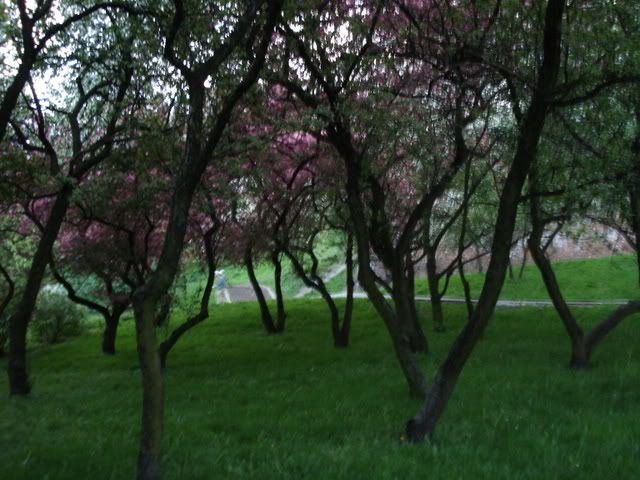
Some beautiful trees near a lovely square in New Town (I think).
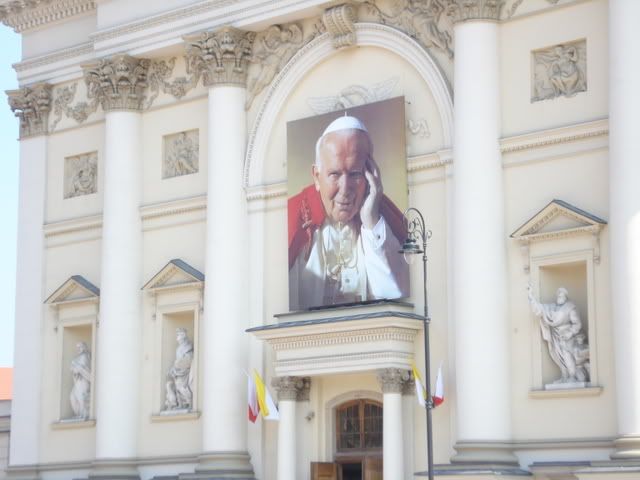
John Paul II is far from forgotten here. This is in the aforementioned lovely square, a church with a big banner of him.
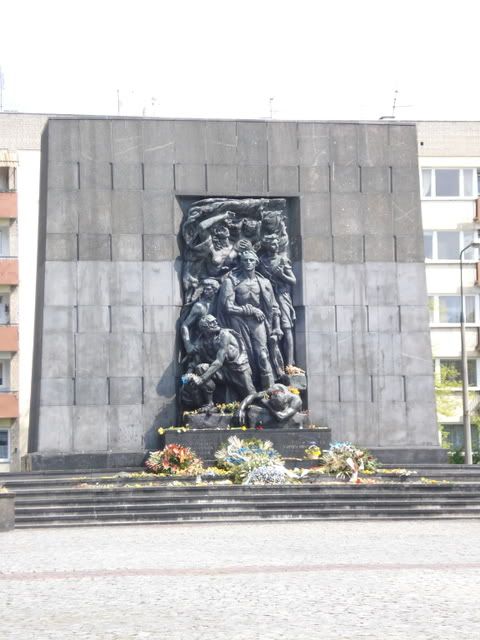
The Memorial of the Warsaw Ghetto Uprising. Across the street, they are trying to build a museum of the history of Jews in Poland.
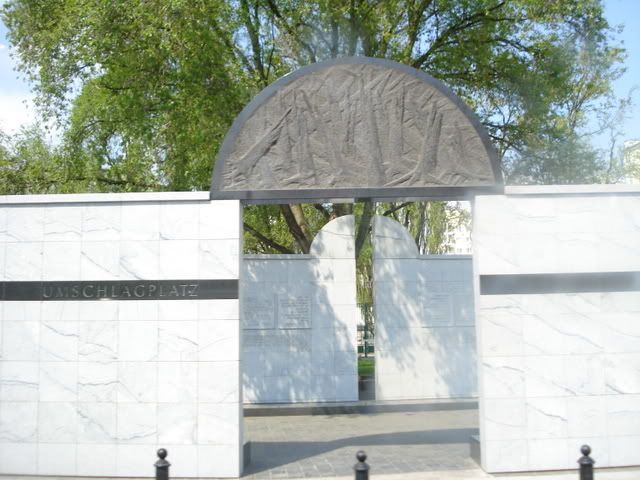
A memorial at the deportation site of the Jews and others to the concentration camp (Treblinka, I think, which was closer, not Auschwitz). This was were they were gathered before boarding the trains.
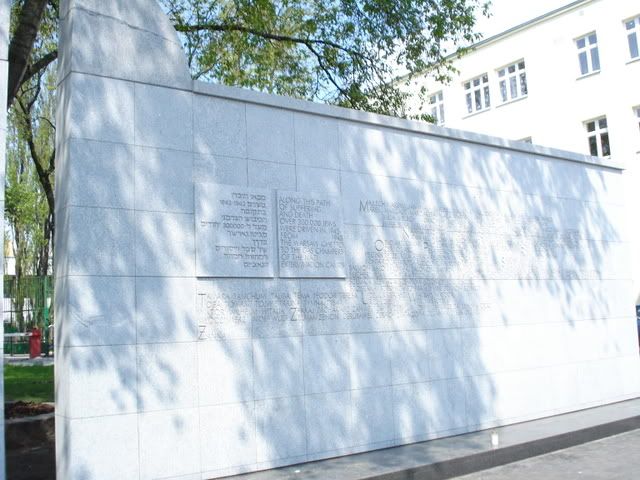
This is one half of inside it. It mirrors the other half, and listed are names, first names since they couldn't put every single name, to honor all those who were deported and the many who died. It also has an enscription in four languages honoring them.
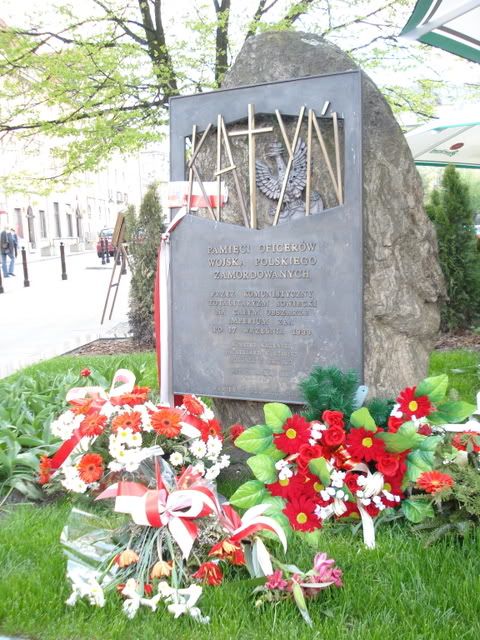
A small memorial just inside Old Town to the victims of the Katyn massacre (took place at three sites, but all buried in a mass grave in Katyn).
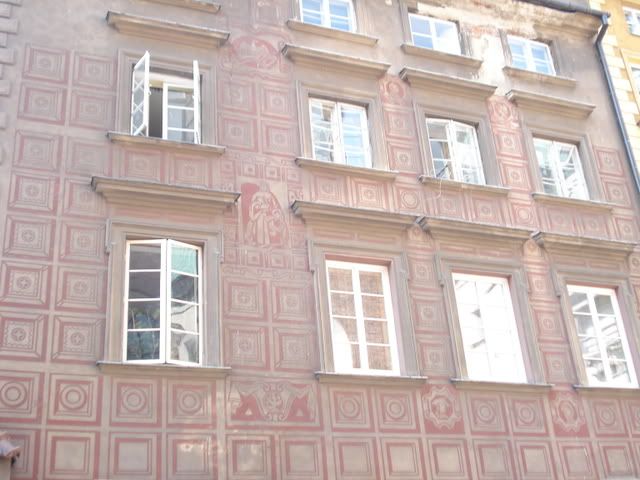
Some of the wonderful painting on buildings in Old Town. I think this one is near the cathedral church there. I do not recall seeing its like there.
Anyway, enough for now! Hope you're all having a wonderful spring!
~Nadja
Advertisement
Tot: 0.073s; Tpl: 0.009s; cc: 6; qc: 43; dbt: 0.051s; 1; m:domysql w:travelblog (10.17.0.13); sld: 1;
; mem: 1.1mb






